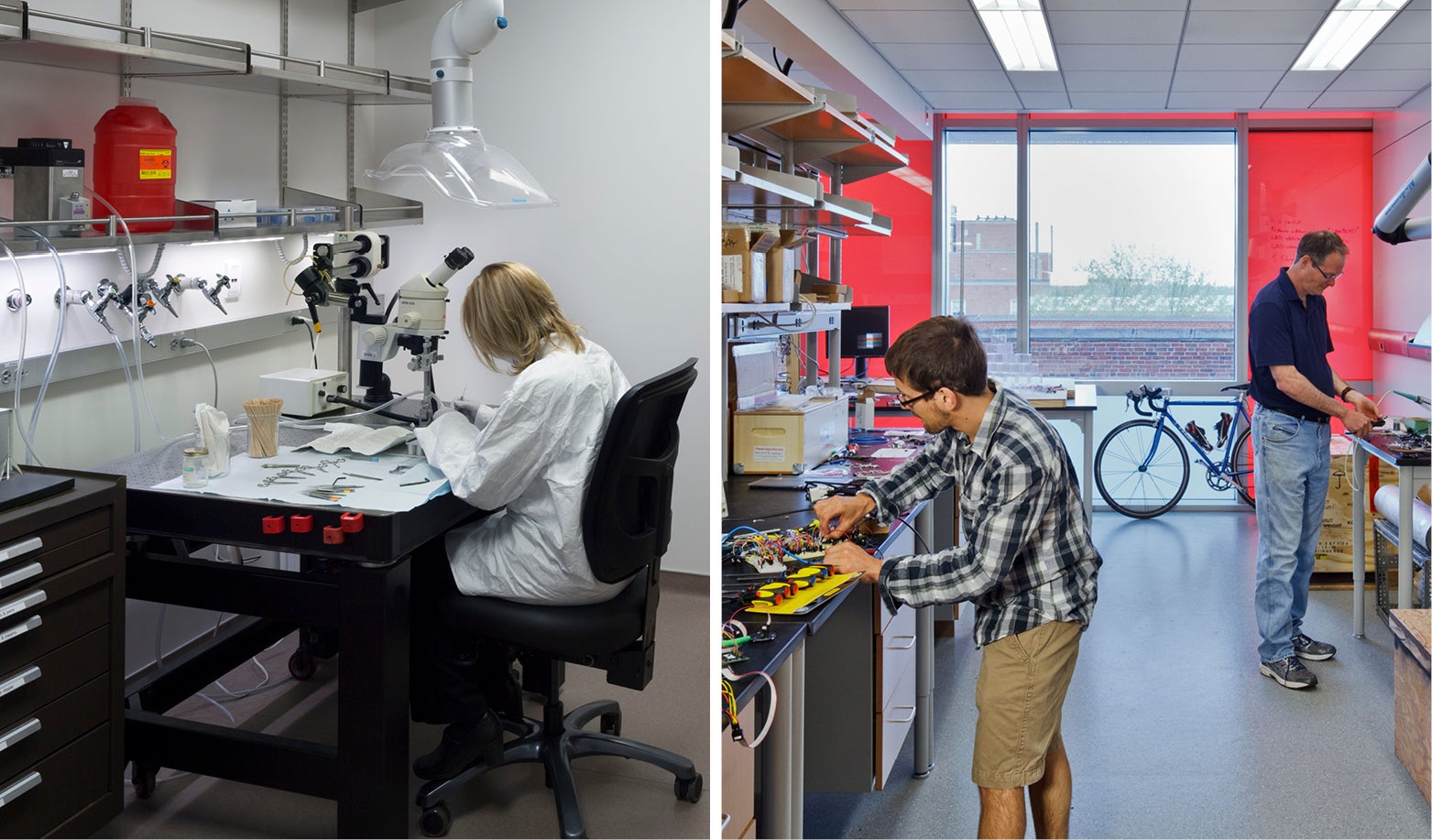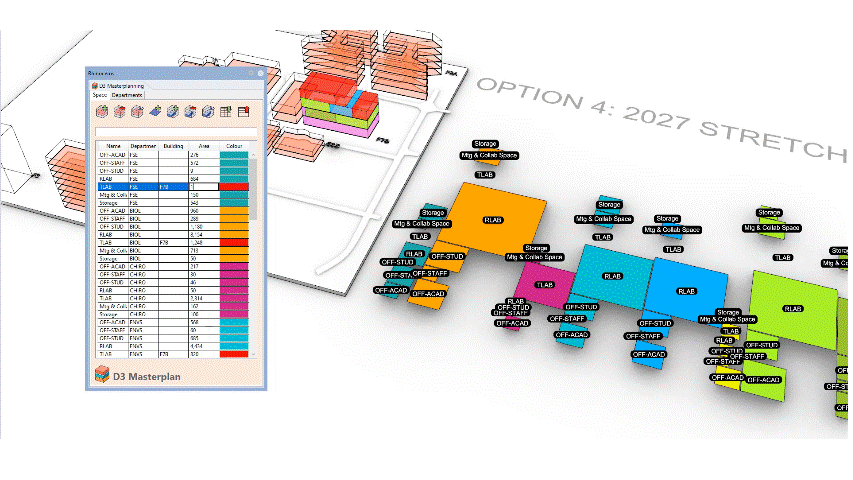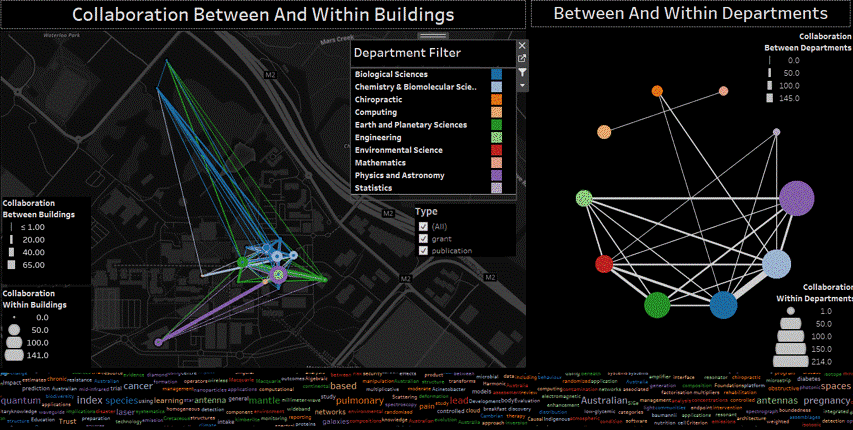
Bringing Clarity to Utilization for Academic Campus Research Master Planning
Using Current Trends and Future Predictions to Maximize Utilization
The forces driving the shift in the research ecosystem are steering research spaces to be interdisciplinary and collaborative, open and accessible and, of course, state-of-the-art. These new laboratories and research areas are diametrically opposite to the small, singular, outdated spaces found in older laboratory buildings which may be half as efficient in providing laboratory space. Maximizing utilization of new and repurposed space is not just a matter of assignment per square foot per principal investigator. It combines an understanding of trends for laboratory requirements driven by the advancement of science and other factors such as cost, funding, human requirements and future trends in laboratory technology and data analysis.
Academic institutions can plan for research space by understanding the trends indicating what they will need based on the types of science they will pursue. Accurately measuring current space use and historical growth trends in laboratory, support, vivarium and office space is a critical starting point. Academic institutions that have historically faced questions in these areas now have the ability to understand physical space, applicability, efficiency and utilization as they formulate their campus master plans for an ever-changing future.
The challenge of utilization is that there’s no one-size-fits-all application for research. Needs vary at every scale — from the different needs of two researchers studying the same topic to the vastly different funding mechanisms between departments and universities. Our HDR team understands the challenges of research utilization. We combine experience, data and our proprietary software to help academic clients create clarity around both trends and utilization so they can make informed decisions both at present and into the future. This article outlines three common challenges in understanding utilization and how HDR’s data-informed planning process helps to overcome them.
Challenges to Understanding Utilization
1. Utilization is “Foggy”
In academic master planning, institutions use quantitative and qualitative information from various, sometimes conflicting sources when determining utilization, making actual needs and issues challenging to identify. Funding variability in PI grants is one example. The different funding metrics used in a biomedical lab versus a physics lab can skew the view of space utilization due to different equipment and staff counts. Different funding sources and measuring tools between research teams also create issues in accurately assessing needs between PIs and separate groups within the same spaces/building. This creates a murky view of true PI utilization needs from a human perspective.
Our team of computational designers and planners sees this challenging mix of information and data, wants and needs as an opportunity to distill it all down to what’s important and more importantly, what makes sense for each PI, group, department, school and institution. We use the computational tools we’ve developed to pull in various data points that allow for understanding and visualization of space, enabling more straightforward and transparent discussions about utilization and future growth. In utilizing these tools and models in a wide range of different scenarios, we discovered there are five or six models of laboratory space utilization that can be applied to the ranges of laboratories found at any institution.
2. Perception Isn’t Reality
A cultural shift toward shared and collaborative spaces between PIs is often not universally embraced. Adjusting space assignments based on utilization, especially within research, can be a very hard sell for users and administrators, as nobody wants to give up their space. The academic world has traditionally seen independent domains for PIs, even in open laboratories, leading to confusion and inaccurate estimates of space requirements. Non-assigned space also presents an issue. With assigned space, there is one specific user or group, but if it is shared, measuring differences in utilization becomes harder. HDR’s data wrangler tool allows us to look objectively and find reason- and data-based solutions, while our process and engagement with end users garner buy-in. Ultimately, the combination of robust data tools and process helps institutions adopt new models for sharing space.
As an example, for a client with biomedical planning needs, our process generally begins by gathering data through surveys, funding and full-time equivalent staff data, commonly used tracking systems and growth data from PIs to account for organic and planned growth. Our tool can input information within hours to allow teams and stakeholders to look at heat maps of grant dollars and staffing to see what’s utilized, requirements for grant dollar square footage met and future growth projections. We can see what PI space isn’t being maximized and why, boiling down to the root causes. We can also capture proximity needs and collaborations, incorporating widely used tracking systems that map where PIs, doctors and other researchers have collaborated to further enable open labs and space sharing.
3. The Future is Unknown
Fluctuating goals for departments and groups clamoring for space can present yet another challenge for administrators, who must take a big picture view despite not always having the granular details. Relying on historic data alone can paint an incomplete picture. We have worked with some institutions to create an interactive, easy-to-update dashboard that helps ensure that individual facilities or master plans are continually evaluated from the perspective of the current state, without having to invest time and resources in repeating a campus planning process every few years. By integrating data collection processes that are already in place into a dynamic dashboard, academic institutions have more precise control over their own campuses, allowing leadership to be nimble and decisive while lowering the risk of making less-informed decisions.
Understanding growth and utilization is a universal challenge for academic institutions. Departments clash, data is hard to understand, and calculated guesses must be made when the future is unknown. Looking at it all from a comparable level is not easy; however, our robust planning process leveraging global expertise paired with a data-driven tool allows institutions to collaboratively look at scenarios to identify reason and data-based solutions that objectively create a more accurate understanding of future use and current requirements.








